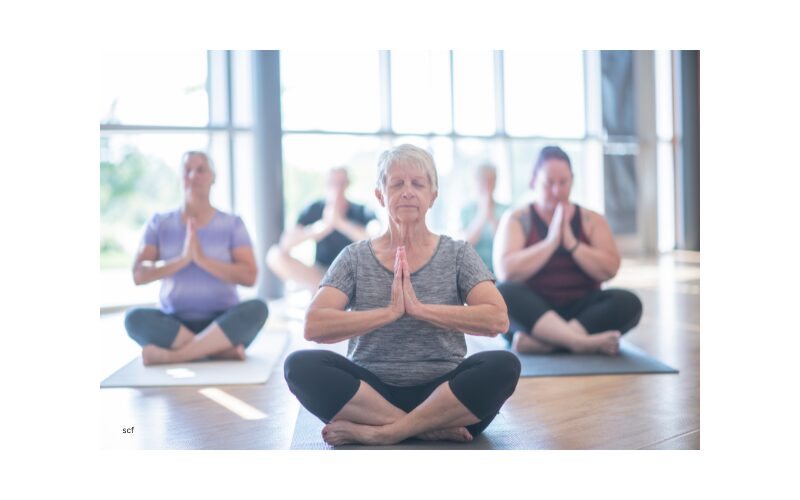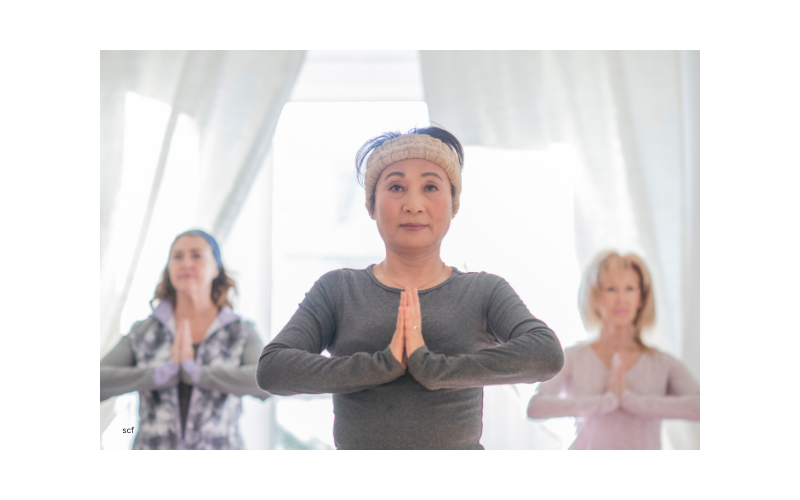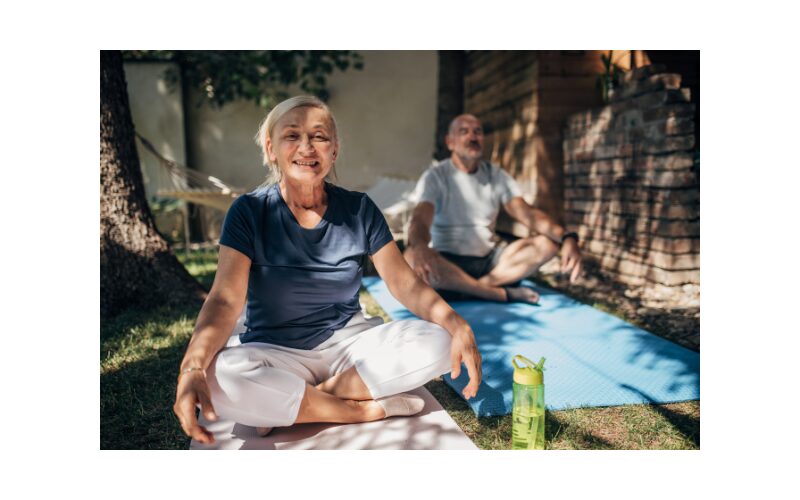Hey there! Let’s talk about mindfulness meditation and why it’s such a fantastic tool for seniors. You don’t need to twist yourself into a pretzel or chant for hours—mindfulness is all about meeting yourself where you are. Whether you want to relieve stress, improve focus, or just enjoy a calmer mind, mindfulness meditation can be your go-to companion in this beautiful stage of life.
Here’s the thing: mindfulness isn’t one-size-fits-all. Seniors have unique needs, and the best part is that meditation can be tailored to fit those needs perfectly. Ready to dive in? Let’s explore how mindfulness can become a meaningful part of your daily life.
1. Why Mindfulness Is Perfect for Seniors
Step 1: Understanding Mindfulness
Mindfulness is simply the practice of being present—fully aware of the moment without judgment. It sounds simple, but its benefits are profound.
Step 2: Why Seniors Should Embrace It
As we age, life can throw a few curveballs—health challenges, shifting social circles, or changes in daily routines. Mindfulness helps you handle these transitions with grace and calm, reducing stress and promoting mental clarity.
Step 3: A Multivitamin for the Mind
Think of mindfulness as a mental health multivitamin. It reduces anxiety, boosts memory, and even improves physical well-being. Regular practice can lead to better sleep, lower blood pressure, and a sunnier outlook on life.

Step 4: Dispelling the Myths
You don’t need to be young, super-flexible, or a Zen master to meditate. Mindfulness is for everyone, no matter your age or ability level. Whether you’re seated in a chair, lying down, or taking a gentle walk, you can do it your way.
Step 5: Start Simple
Begin with beginner-friendly techniques like seated breathing exercises or guided meditations. Apps like “Mindfulness Meditation Techniques Pocket” are easy to use and senior-friendly.
Step 6: Celebrate the Benefits
Every small step in mindfulness can make a big difference. From calming your mind to finding joy in everyday activities, mindfulness is a gift you give yourself.
2. Mindfulness Techniques for Stress Relief
Stress happens to everyone, but mindfulness is like your secret weapon for tackling it.
Step 1: Recognize the Stressors
Common triggers for seniors might include health concerns, financial worries, or feeling isolated. Understanding these triggers is the first step to managing them.
Step 2: Focused Breathing
Try this: Inhale deeply through your nose for a count of four, hold for four, and exhale slowly for a count of six. Repeat this a few times, and notice how it calms your body and mind.
Step 3: Body Scan Meditation
Lie down or sit comfortably. Gently bring your awareness to each part of your body, starting from your toes and moving upward. This helps release tension you didn’t even know you were holding.
Step 4: Mindful Walking
Take a slow, deliberate walk, paying attention to each step. Feel the ground under your feet, notice the breeze on your skin, or listen to the birds. This practice turns an everyday activity into a meditative experience.
Step 5: Semi-Guided Meditations
Think of these as relaxation tours for your mind. Guided apps or YouTube videos can lead you through practices designed to reduce stress and improve relaxation.

Step 6: Incorporate Mindfulness into Routines
Turn daily chores into mindfulness moments. Focus on the sensations of washing dishes, watering plants, or folding laundry. Everyday tasks become calming rituals.
3. Boosting Memory and Focus with Mindfulness
As we get older, memory and focus might feel like they’re playing hide and seek. Good news: mindfulness can help.
Step 1: Stay Present
Mindfulness trains your brain to stay in the moment, which reduces mental clutter and sharpens focus.
Step 2: Practice Focused Attention
Choose a simple object, like a candle flame or a flower. Spend a few minutes observing it in detail. This strengthens your ability to concentrate over time.
Step 3: Try Quiet Mind Techniques
Set aside 5–10 minutes to sit quietly. Close your eyes, focus on your breath, and gently bring your mind back when it wanders. Think of it as a workout for your brain.
Step 4: Use Mindful Stretching
Combine gentle movement with focused attention. Stretch your arms or legs while paying attention to how your body feels. This enhances both physical and mental flexibility.
Step 5: Guided Exercises for Memory
Explore resources like “Mindfulness Meditation Techniques Buddha” to find practices tailored for improving cognitive health.
Step 6: Track Your Progress
Notice the small wins. Maybe you remember names more easily or stay focused during conversations. These moments are signs that mindfulness is working.
4. Practical Tips to Start and Stick With Mindfulness
Starting a mindfulness practice might feel daunting, but it’s easier than you think.
Step 1: Create a Routine
Set aside a specific time each day, like morning or evening. Even five minutes is enough to build a habit.
Step 2: Find a Comfortable Space
Choose a quiet, cozy spot in your home. Add a cushion, chair, or blanket—whatever makes you feel at ease.

Step 3: Use Guided Resources
Apps like Headspace or websites like “www.mindfulnessmeditationtechniques.com” offer senior-friendly guided meditations to help you get started.
Step 4: Start Small
Begin with short practices and gradually increase the time as you get comfortable.
Step 5: Make It Enjoyable
Play calming music, light a candle, or meditate outdoors if you love nature. These small touches make the practice more enjoyable.
Step 6: Connect with a Community
Join a local mindfulness group or an online forum. Sharing your journey with others adds accountability and keeps the experience engaging.
5. Mindfulness for Long-Term Well-Being
The real magic of mindfulness lies in its long-term benefits.
Step 1: Emotional Resilience
Mindfulness helps you navigate life’s ups and downs with grace. It cultivates patience, acceptance, and gratitude.
Step 2: Physical Health
Regular mindfulness practice lowers stress hormones, improves sleep, and can even reduce blood pressure.
Step 3: Mental Clarity
Over time, mindfulness sharpens your thinking, improves memory, and keeps your mind agile.
Step 4: Building a Legacy
Mindfulness teaches valuable life lessons—kindness, empathy, and being present. It’s something you can share with family and friends.
Step 5: Keep Evolving
Mindfulness isn’t a destination; it’s a journey. Keep exploring new techniques and adapting them to your changing needs.
Step 6: Celebrate Your Progress
Every moment of mindfulness is a step toward a richer, more fulfilling life. Celebrate your efforts and keep going.

Conclusion: Your Mindfulness Journey Starts Now
Mindfulness meditation is a gift you give yourself—a moment of peace in a busy world, a tool for navigating life’s challenges, and a way to stay connected to what matters most.
Whether you’re trying to manage stress, sharpen your memory, or simply enjoy the present moment, mindfulness has something to offer. So, why not give it a try? Start small, stay curious, and enjoy the journey. You’ve got this, my friend!


